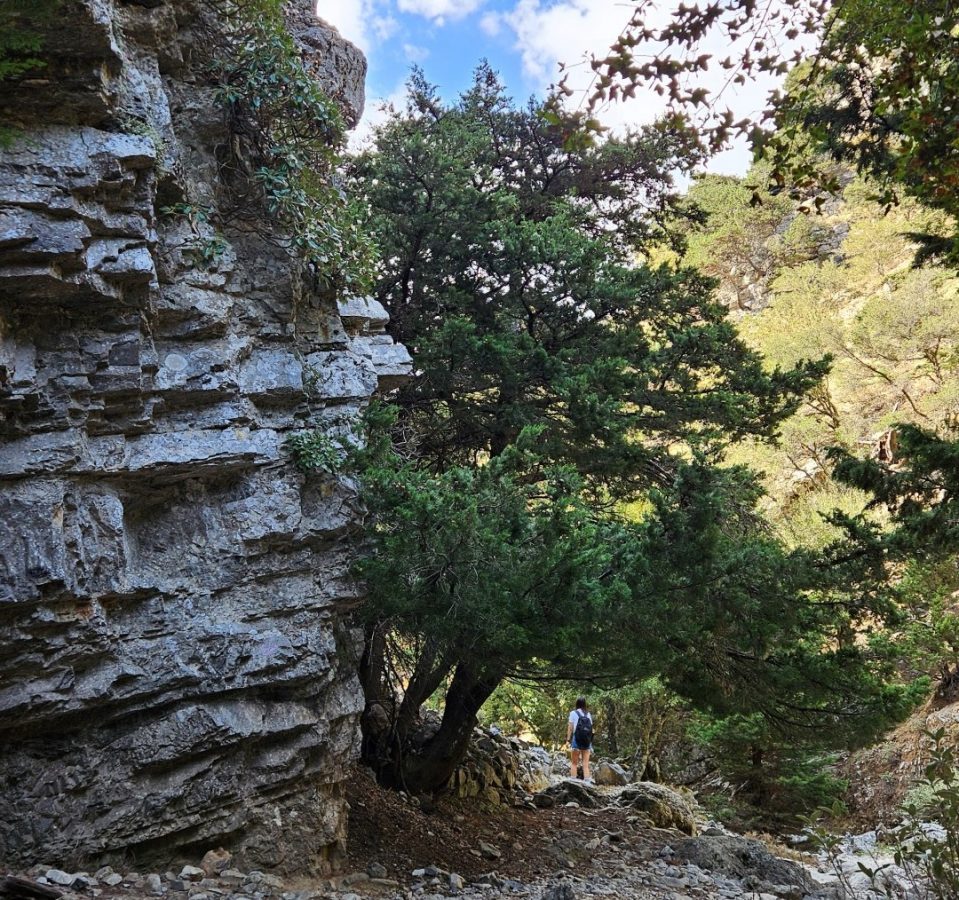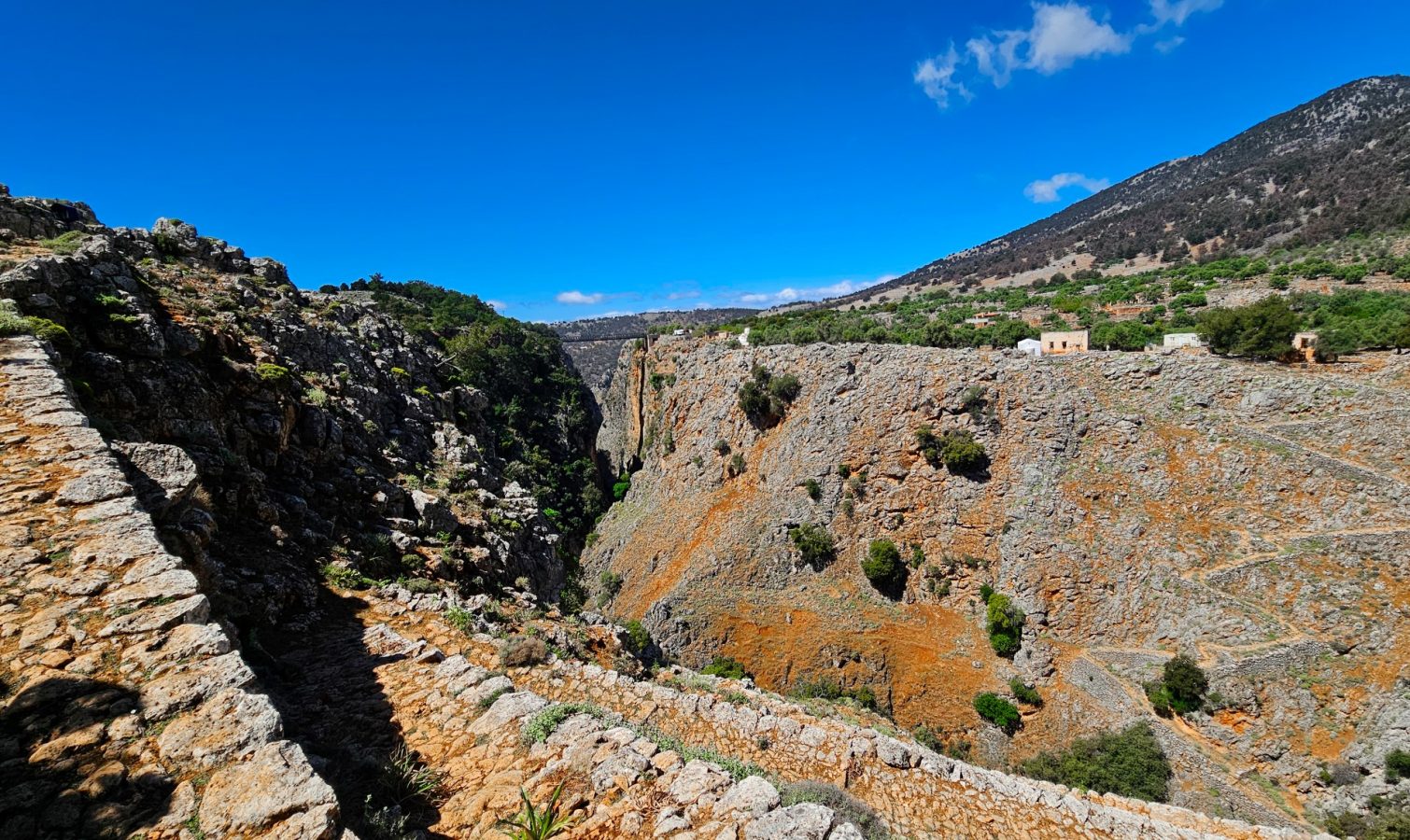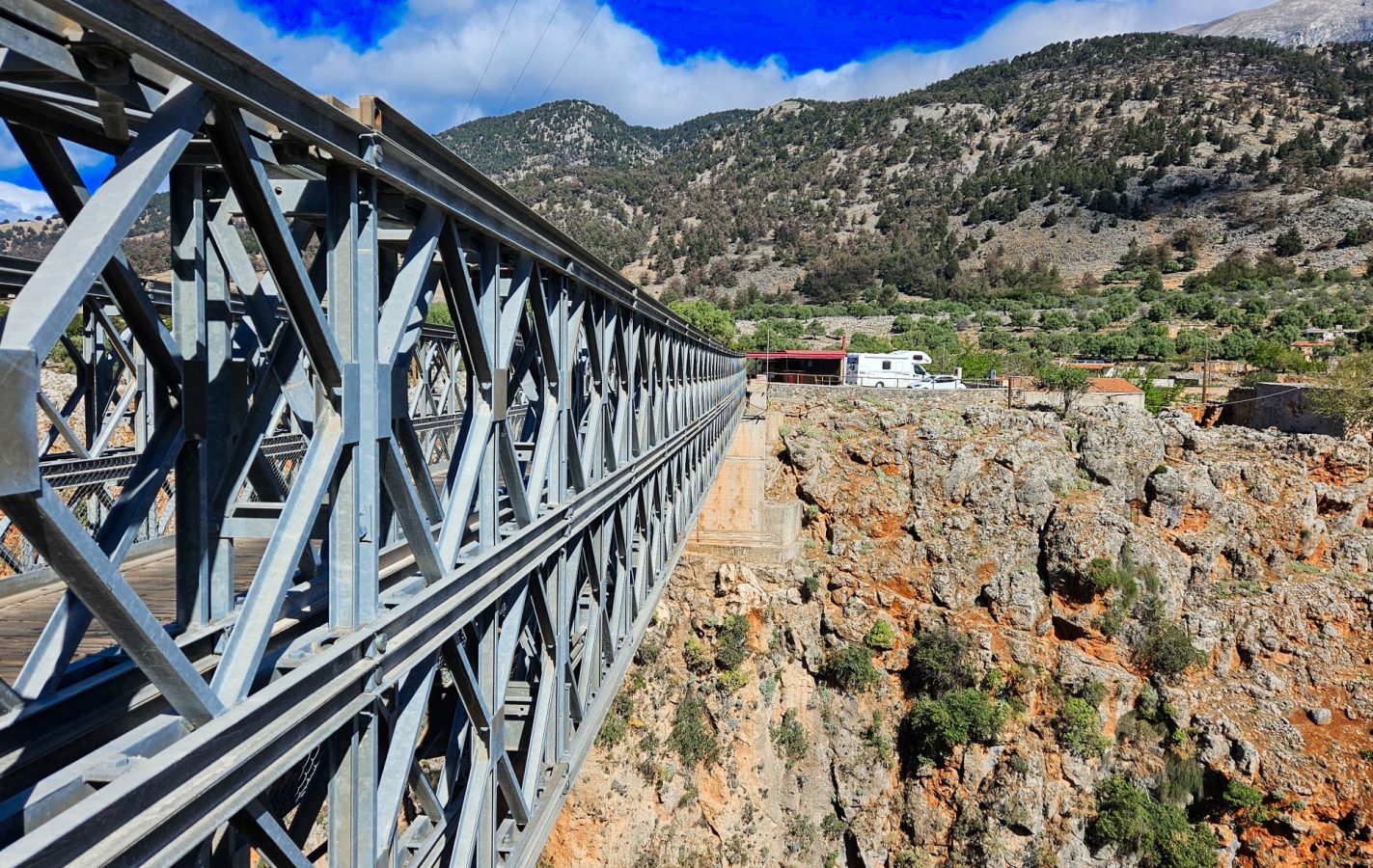- Entry fee: €5 per visitor, pending Ministry of Environment approval.
- Revenue split: 70% to Sfakia Municipality, 30% to OFYPEKA (Nature and Climate Change Agency).
- Purpose: Conservation, infrastructure upkeep, and local development.
- Precedent: Aradena Gorge recently introduced the same fee.
- Why it matters: Imbros is Crete’s third most popular gorge, with a fragile ecosystem under heavy visitor pressure.
Paying to Protect One of Crete’s Natural Icons
Starting soon, hiking the Imbros Gorge — the third most visited in Crete after Samaria and Agia Irini — will cost visitors €5. The Municipality of Sfakia has approved the plan and sent it to the Ministry of Environment and Energy for approval, following the example of Aradena Gorge, which recently introduced the same system.
It is a fair price for a landscape this spectacular — and this delicate.
The municipality says Imbros receives heavy foot traffic every year, and the wear and tear is showing. Without dedicated funding, keeping the gorge clean, safe, and properly signposted is an uphill battle. The new fee will:
- Support conservation: Maintain trails, signage, and waste management.
- Strengthen the local economy: Keep part of the value generated by tourism in the community.
- Match best practice: Align with other protected areas in Greece, like Aradena.
Where the Money Goes
If the Ministry approves, the €5 ticket will be split:
- 30% to the Nature and Climate Change Agency (OFYPEKA).
- 70% to Sfakia Municipality for conservation, safety, cleaning, and development projects across the area.

More Than Just a Pretty Walk
Imbros Gorge is part of the European E4 trail and runs for 11 kilometres from the mountain village of Imbros at 700 metres altitude down to the town of Komitades. The trek takes three to four hours, depending on the severity of winter damage from landslides and floods.
The walk begins through a wide opening known as Porofarango or Porolagkos, before narrowing into towering rock walls. Along the way, you pass weathered cypress trees, ancient oaks, maples clinging to the cliffs, and caves carved into the stone. Traces of the old mule path still appear — once the main route linking Sfakia to Chania, and the site of fierce battles with Ottoman forces during the occupation.
You will also encounter history from more recent times: a spot called Aeroplano, where a German aircraft crashed in WWII, its wreckage now displayed in the War Museum of Askifou. Then come the famous narrow passages of the gorge — including Stenada, where the walls stand 300 metres high but only 1.6 metres apart. It is nature’s way of making you feel small.
From Venetian water cisterns at Mesofarango to the stone arch of Xepitira and the final stretch into Komitades, the route is packed with scenery worth protecting — and worth paying for.
Aradena Gorge Charges €5, Too
The €5 conservation fee is not unique to Imbros — Sfakia introduced the same measure for Aradena Gorge at the beginning of July 2025, right after completing essential maintenance on its access path.€5
Aradena is a showpiece of Crete’s wild beauty, perfect for hikers and lovers of alternative tourism. The route blends the raw drama of the White Mountains with the stonework and history of the village of Aradena.

Access points:
- North side: via the old paths running along both sides of the gorge, or from the village of Livaniana.
- South side: from the famous Marmara Beach. From there, visitors can:
- Take a boat to Loutro or Chora Sfakion.
- Travel with private operators by sea or road.
- Join the European E4 trail west to Agia Roumeli or east to Lykos, Phoenix, Loutro, Glyka Nera, and Chora Sfakion.
Highlights:
- The Vardinogiannis Bridge — a bungee-jumping hotspot.
- The traditional village of Aradena.
- The Skotini Cave, deep in the gorge, with natural stalactites.

The hike takes around 2.5 to 3 hours, is of moderate difficulty, and rewards the prepared — bring water, wear the right clothing, and take safety seriously.
Sfakia Municipality calls it an authentic way to experience Cretan nature, history, and hospitality, and now, like Imbros, it asks visitors to contribute €5 to keep it that way.
A Cocktail Costs More
Some will grumble at the idea of paying for hiking in once-free gorges. But here’s the truth: five euros is less than you will pay for a beach cocktail you will not even remember in two hours — and this buys you a walk through centuries of history, rare ecosystems, and some of the most photogenic geology on the island.
A fragile landscape like Imbros does not take care of itself. A small ticket is a small price to keep it wild, clean, and open for generations to come.